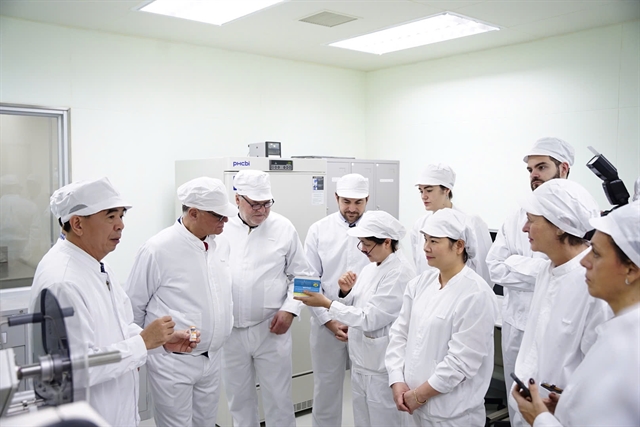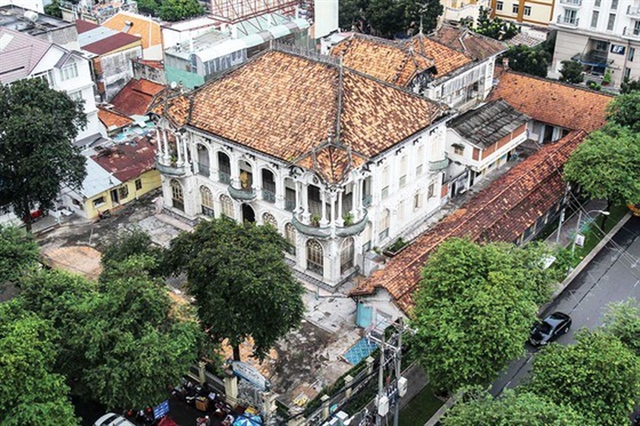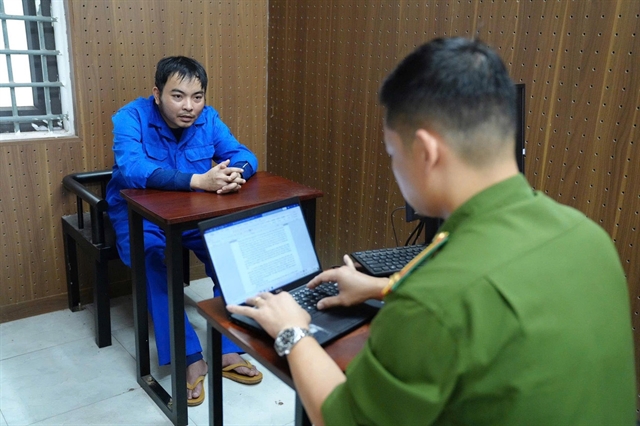 Society
Society

The HCM City's People Committee has added 35 old villas in the city to the list of ancient villas that need to be preserved.

|
| The old Phưong Nam villa, one of the city’s most well-known buildings of its type, is on the list of ancient villas that need preservation. Photo: sggp.org.vn |
HCM CITY — The HCM City's People Committee has added 35 old villas in the city to the list of ancient villas that need to be preserved.
The list now has more than 200 villas.
The buildings, which have historical, cultural and architectural values, include one at 12 Lý Tự Trọng and 6B Ngô Thời Nhiệm streets and a 100-year-old villa at 237 Nơ Trang Long Street in Bình Thạnh District.
Sustainable villa conservation in the long run should take into account economic gains for villa owners, the city said.
A survey by the HCM City Department of Planning and Architecture in August 2020 showed 560 out of the 1,550 pre-1975 villas in the city are no longer in their original form.
The villas are classified into three groups based on their historical and cultural importance, with detailed regulations for preservation. Buildings in groups 1 and 2 must be preserved, while buildings in group 3 have little historic or architectural value and can be demolished.
In the first group, exterior architectural form, internal structure, construction density, number of floors and height have to be maintained. The external architectural shape must be maintained for villas in the second group.
The owner of villas in group 3 must comply with the laws on building and architectural planning management.
The committee has asked the owners to comply with regulations on renovation and conservation of old villas, the Housing Law, and regulations on the management and use of State-owned villas.
Repairs and renovation must comply with the Law on Cultural Heritage to ensure the protection of cultural, art or historical value of the villas.
Hoàng Minh Trí, former director of the city's Institute for Urban Planning, said it was important to have regular maintenance on old cultural buildings and government involvement in establishing preferential policies for villa owners to ensure they are engaged in preserving local culture.
Archeologist Dr. Nguyễn Thị Hậu proposed that regulations honouring villa owners’ wishes and financial benefits be added to the current Law on Cultural Heritage.
The city established the Council for Villa Classification in 2015, approved the general criteria for classification in 2018, and first issued the decision to start classifying villas in 2020.
Before the regulations were issued, authorities could not interfere with the villa owners’ decisions and many were demolished or have fallen into disrepair in recent years. Some old villas have been renovated to become schools, restaurants or coffee shops.
The city has about 3,000 valuable old houses and villas that could be preserved properly but are likely to be demolished, according to the Architecture Research Centre under the city’s Department of Planning and Architecture.
Of that number, nearly 1,300 houses were built before 1975. About 168 of them are under State management and receive funds from the city’s budget for repair and preservation. However, only a few houses remain in good condition. VNS



